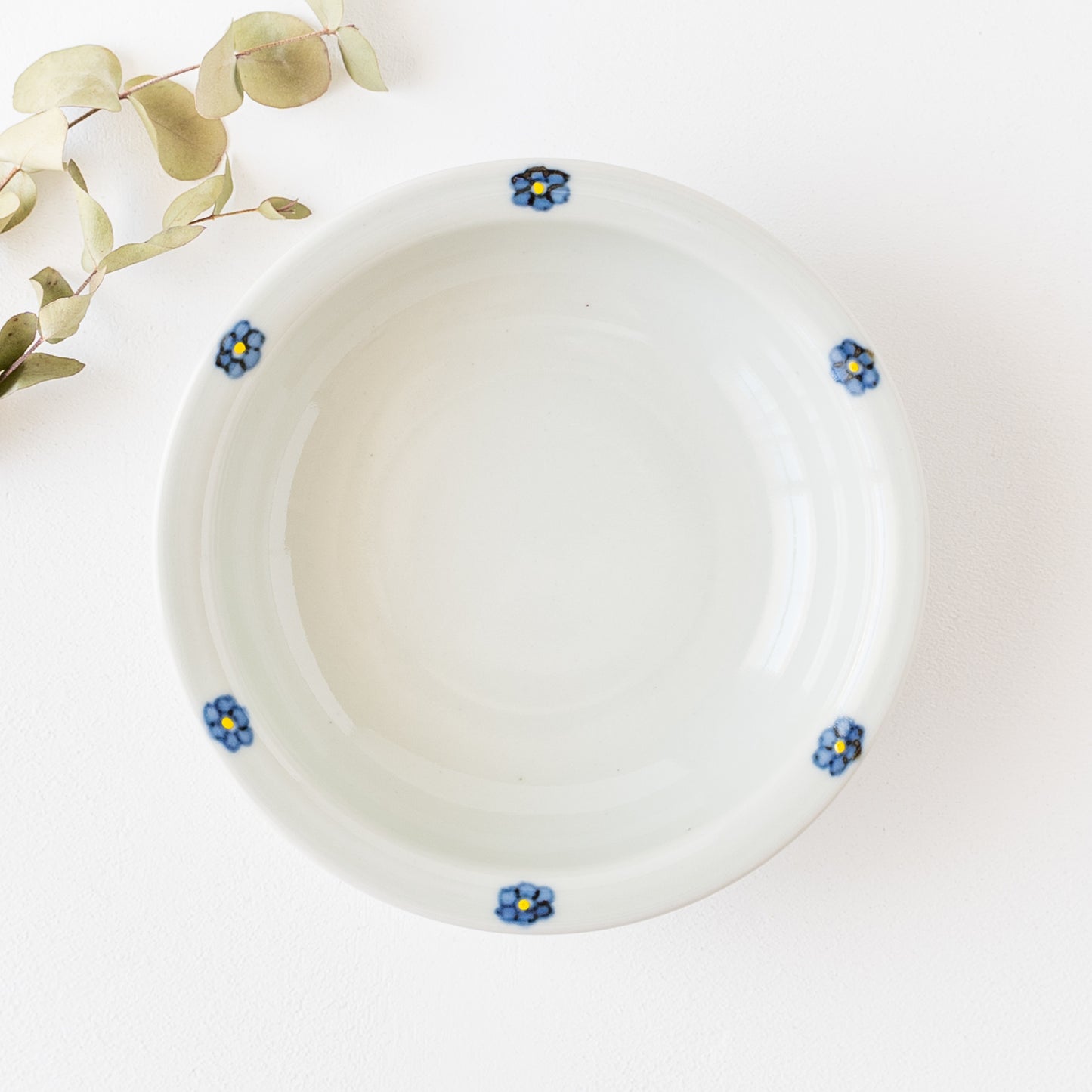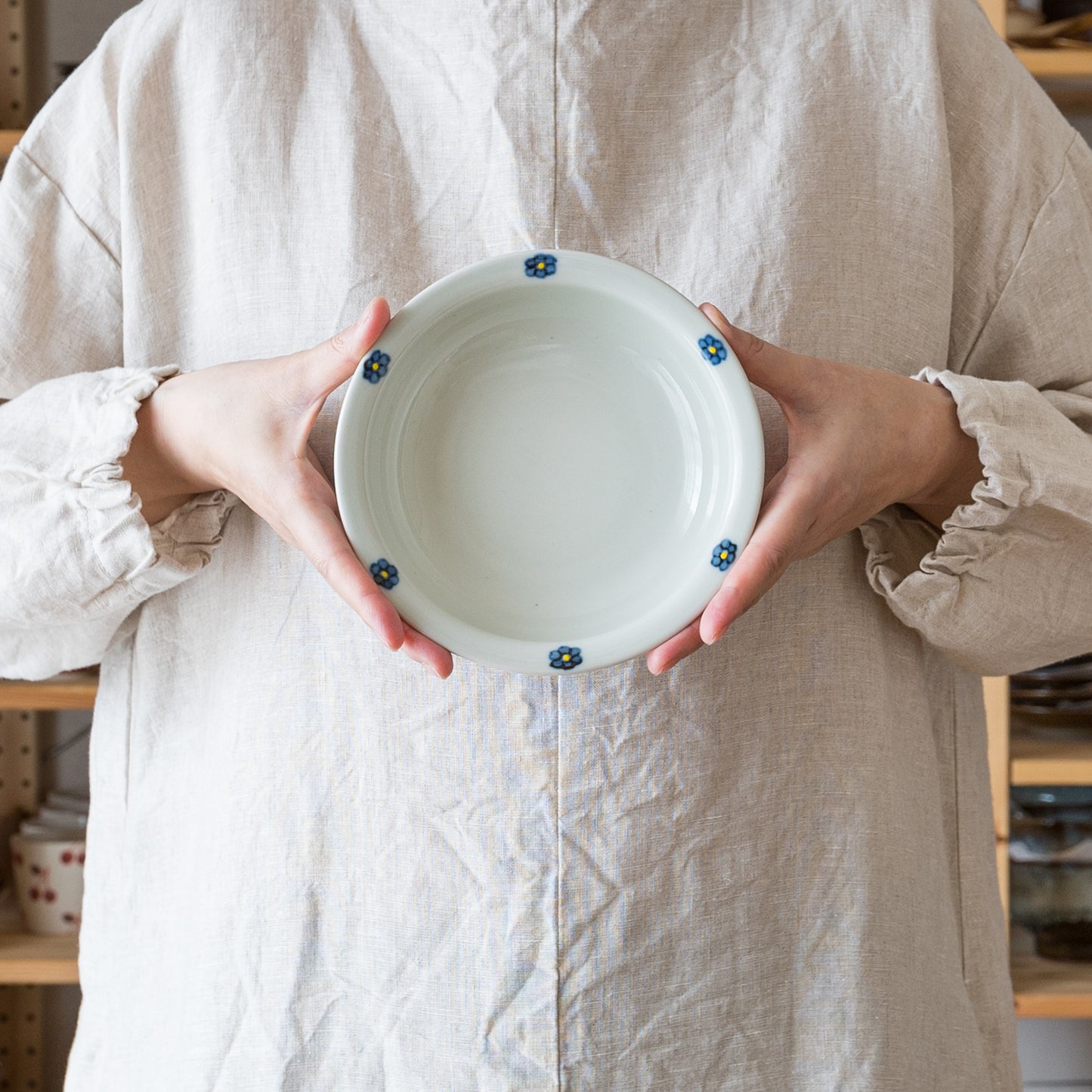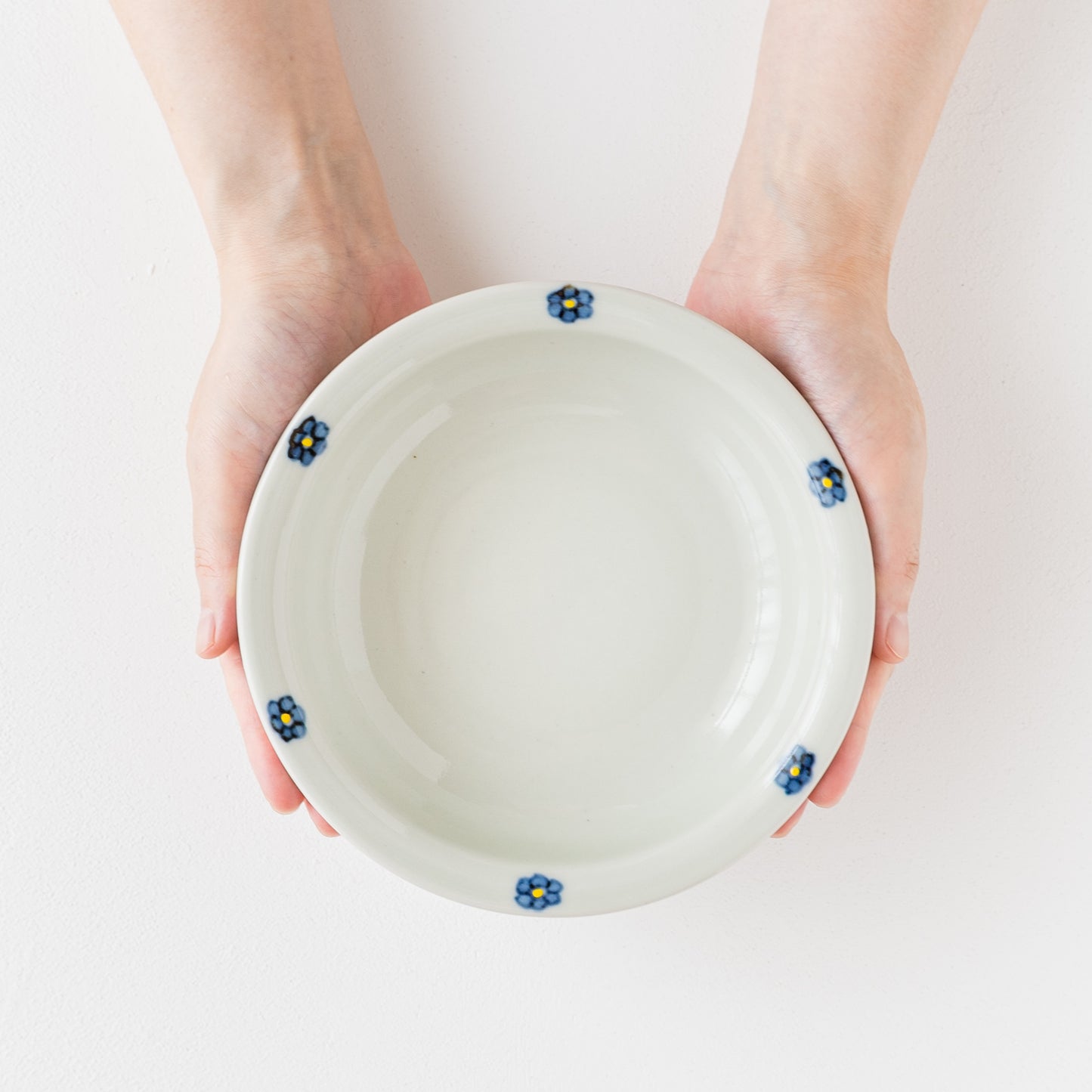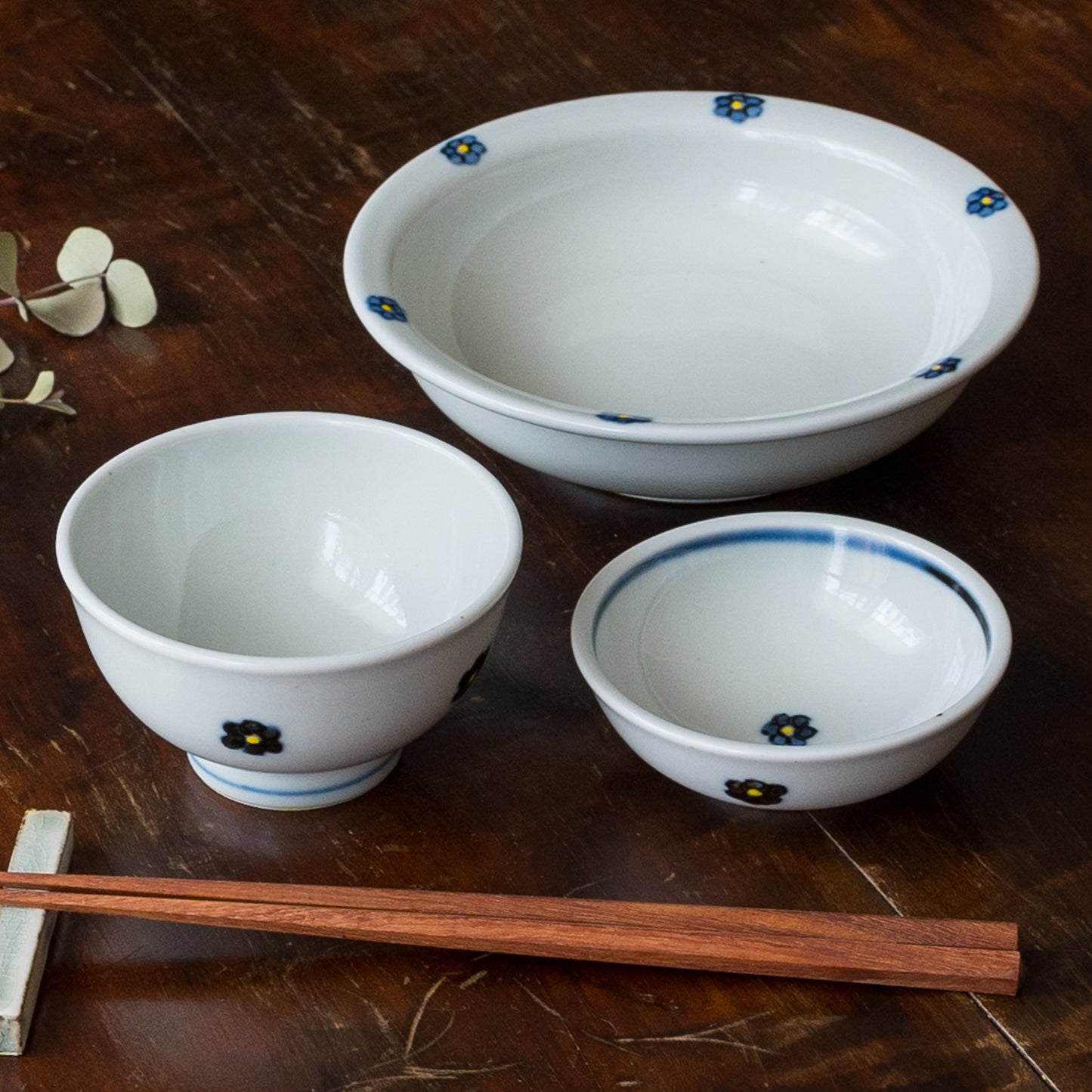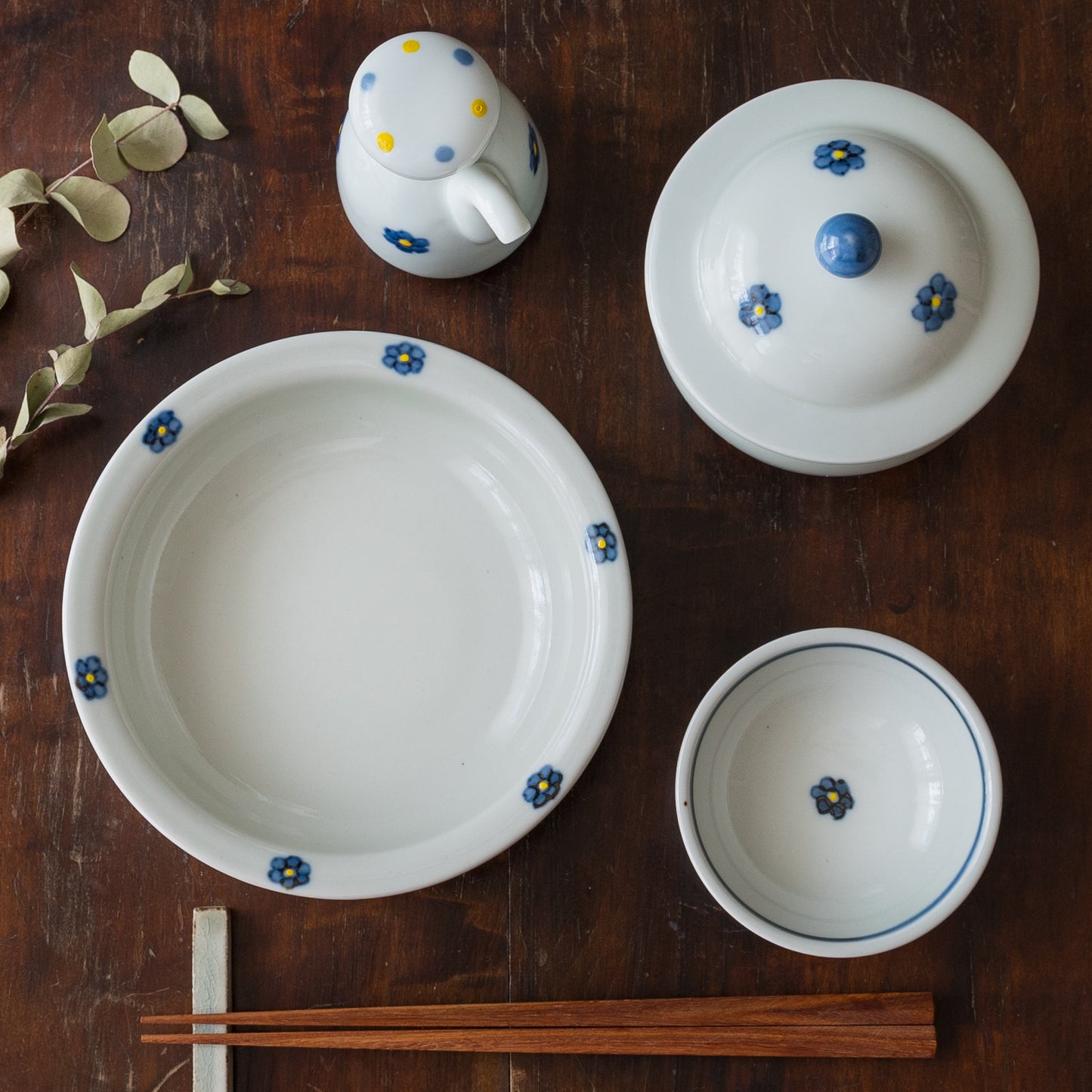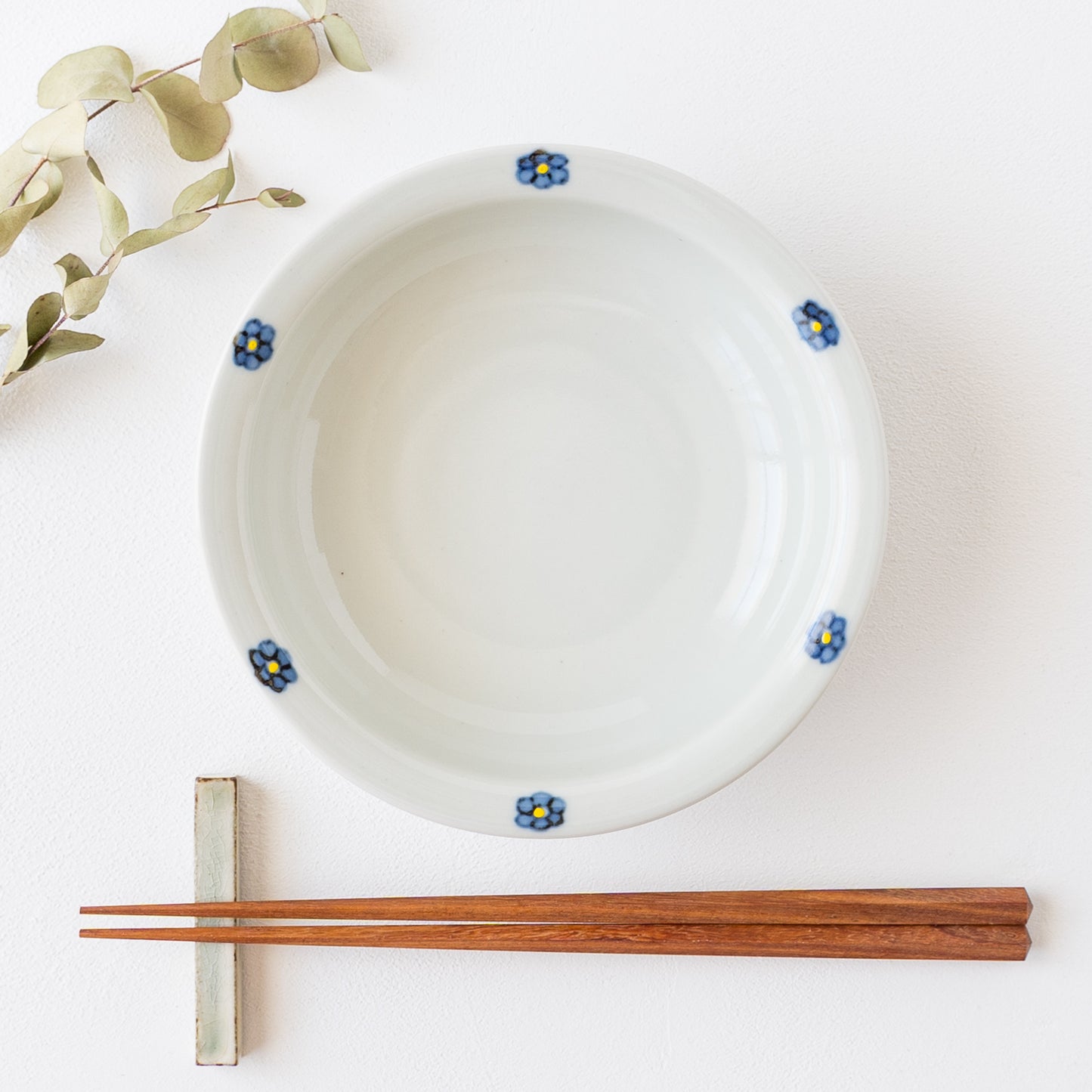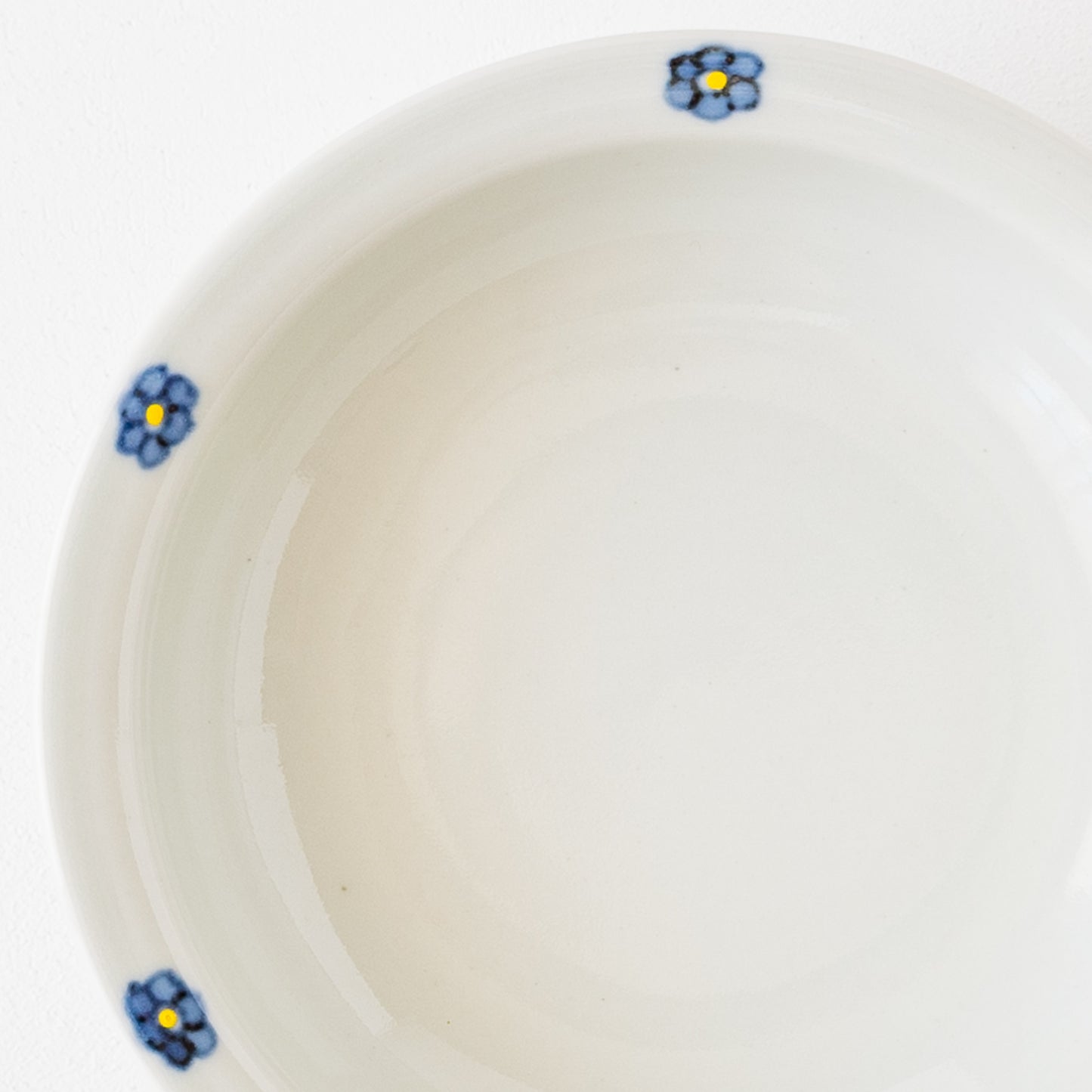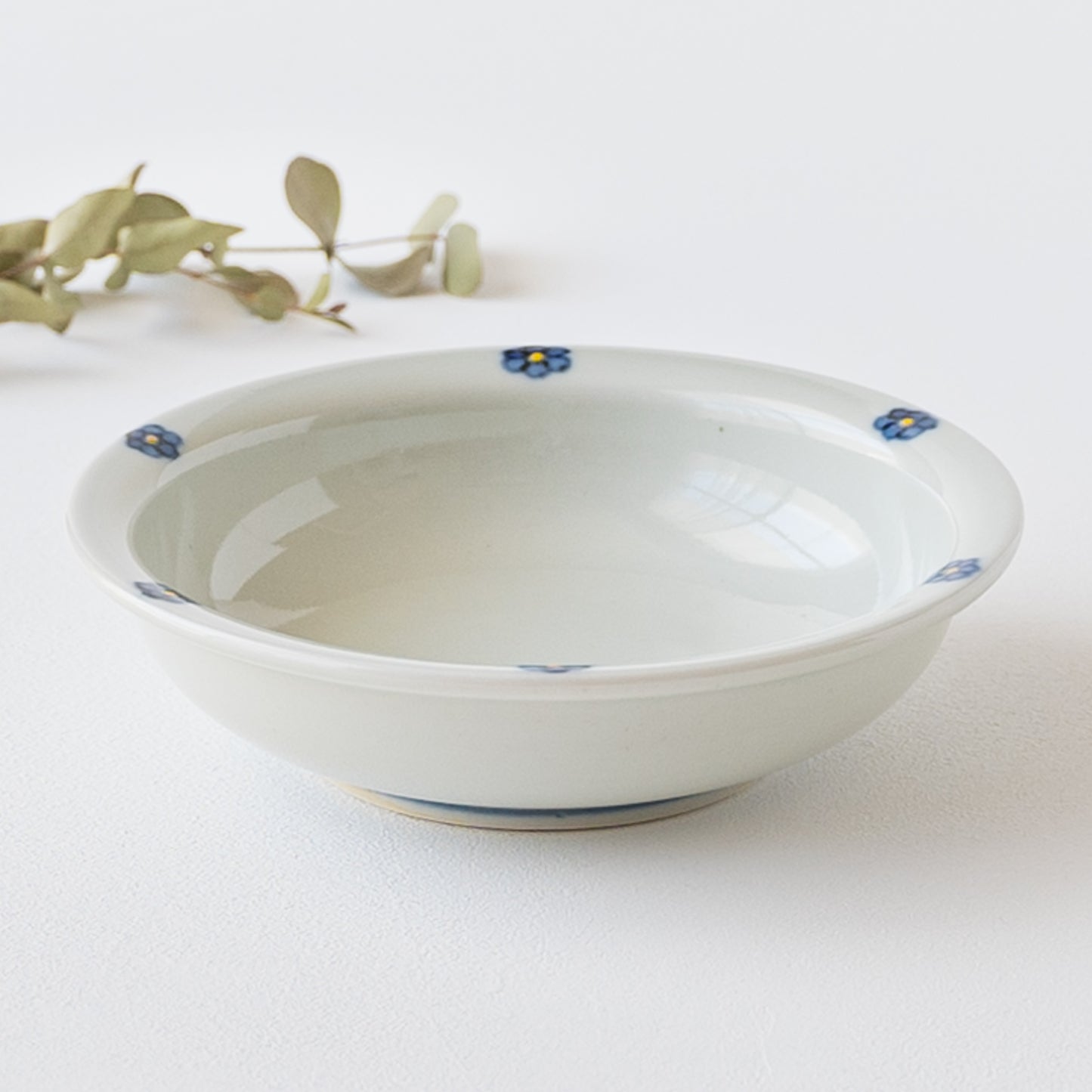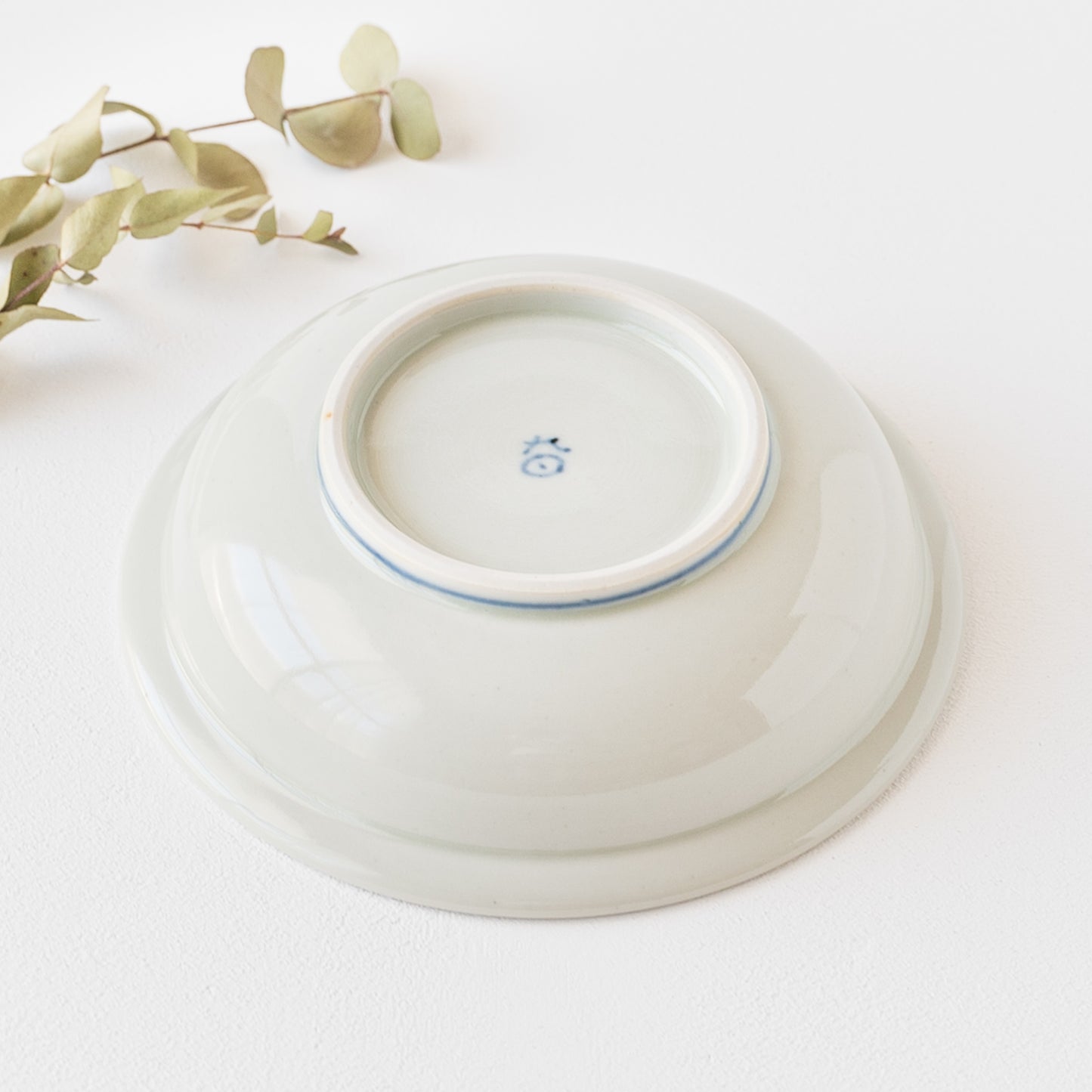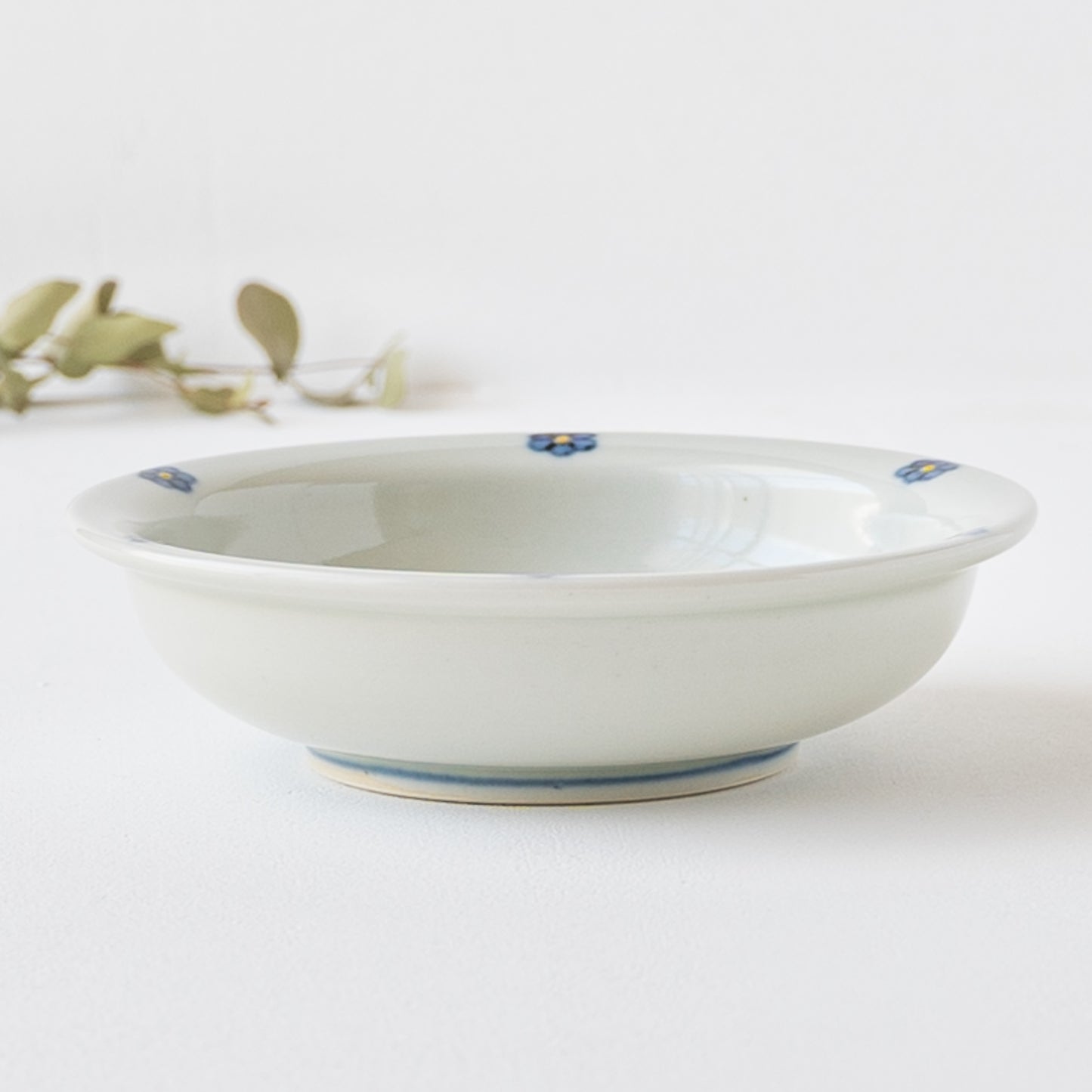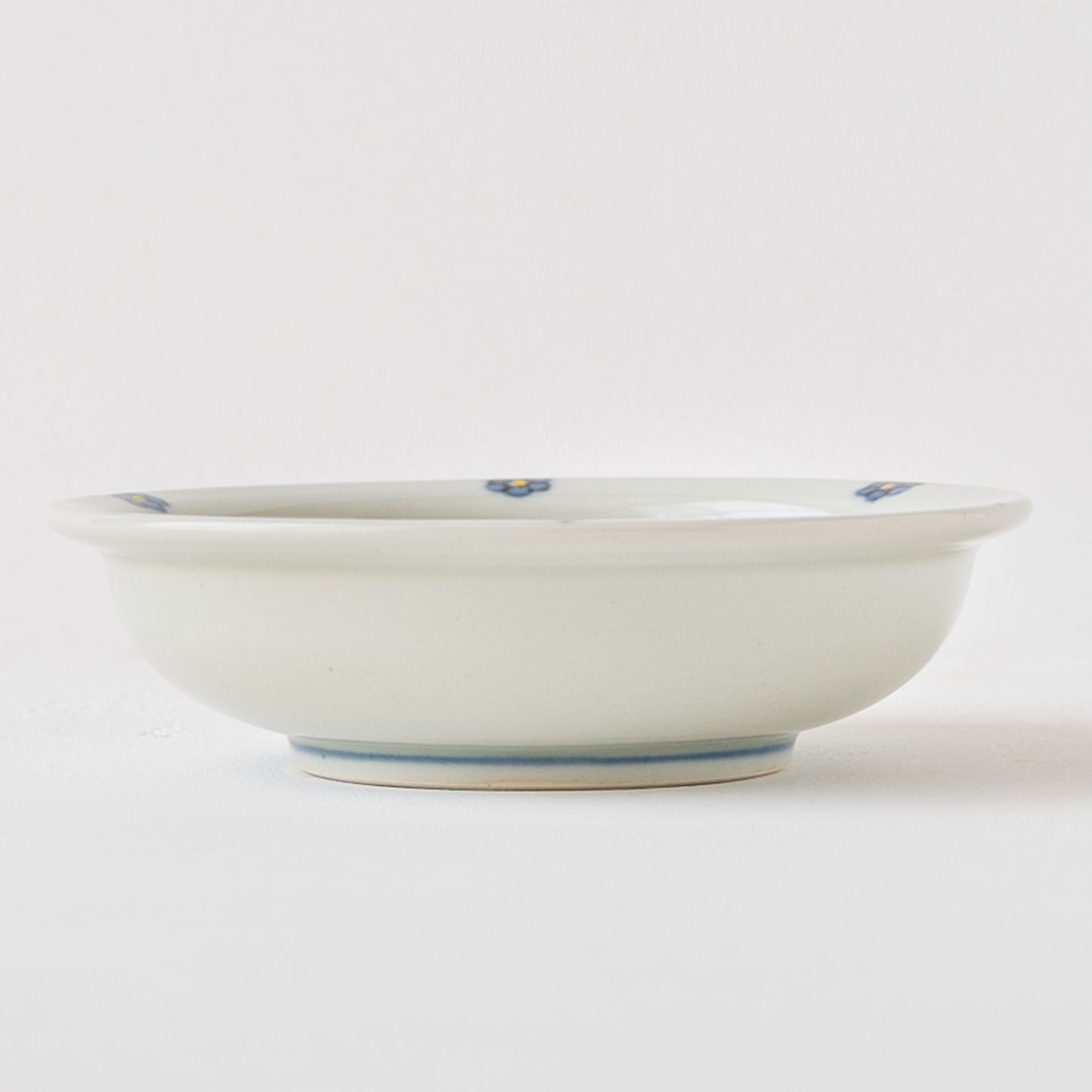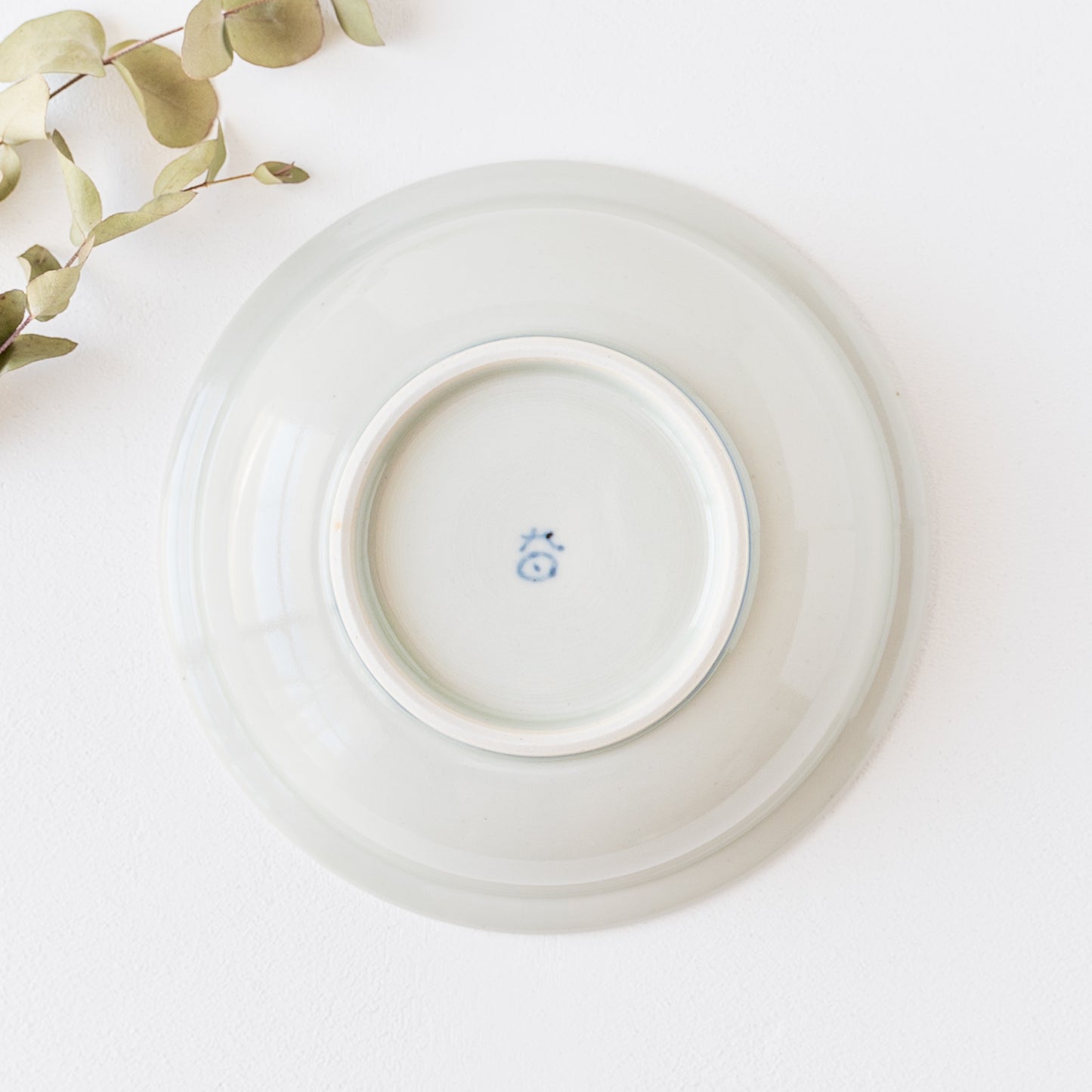四季折折
Deep plate with rim Small flowers|Arita ware Dainichi kiln
Deep plate with rim Small flowers|Arita ware Dainichi kiln
Couldn't load pickup availability
Regarding delivery
Regarding delivery
It will be delivered by Yamato Transport.
Shipping charges vary by region.
Kanto/Kansai/Tohoku/Shinetsu/Hokuriku/Tokai 880 yen per destination Chugoku/Shikoku 1,100 yen per destination Hokkaido/Kyushu 1,300 yen per destination Okinawa 1,400 yen per destination
* Free shipping (excluding Okinawa and remote islands) for purchases of 20,000 yen or more.
よくある質問
よくある質問
お客様からよくある質問をまとめました。詳しくはこちら
Gentle and cute florets
The small flowers accented with bright yellow are drawn on the rim of the Gosu color, which has a nice texture of light and shade, and it looks very cute. All the paintings are hand-painted, so each one has a different expression, and just looking at it will soften your heart.

I can feel the warmth
Simple shapes and simple patterns based on early Imari. The glaze, gosu, and red painting are made in-house using traditional methods. Since natural raw materials are used, the pale gosu color and the soft white that is not pure white give a warm feeling.

easy to pick up
Glossy and smooth texture with a gentle and smooth touch. Because it has a rim, it is easy to pick up and hold, and it complements the dishes you serve.

Safe for juicy side dishes
Depth is about 3.3cm. Juicy side dishes such as simmered dishes, marinated dishes, and vinegared dishes can also be safely served. It goes well with salads and assorted pickles. The design is easy to combine with other bowls, so it seems to be useful.

Because each piece is handmade, there are individual differences such as color, shape, size, weight, uneven coloring, uneven firing, uneven glaze, glaze pools, and subtle differences in design . In addition, there may be differences in the degree of glaze, faintness, and iron powder (black spots), but there is no problem with use. Please enjoy it as a unique expression unique to handmade. You can't choose which item you receive, but we hope you'll look forward to it until it arrives. If you are interested, please contact us before shipping and we will email you a separate photo, so please feel free to contact us.
◆◆ A list of ceramics by Dainichigama ◆◆
Product Details
| Producing area | Japan |
| material | porcelain |
| size |
Diameter: about 16cm |
| Electronics |
Microwave: Yes Dishwasher: Yes Oven: Yes Direct fire: No |
|
Dainichigama |
| 1958 | Opened the kiln in Arita-cho, Saga Prefecture |
| Founder Hideo Kubo opened the kiln. The second owner is Toru Kubo and his wife Toshie. Hiroshi Kubo is the third generation owner. Molded by Hiroshi Kubo and painted by his mother, Toshie Kubo |
| Arita ware |
|
Arita-yaki refers to the porcelain that is fired in Arita-cho, Saga Prefecture and its surrounding areas. Because it was shipped from Imari Port in Saga Prefecture, it is also called Imari or Imari ware. Approximately 400 years ago, in the early 17th century, Korean potter Lee Shuhei and others discovered Mt. Izumi in Arita and succeeded in producing porcelain for the first time in Japan. Arita is considered to be the birthplace of Japanese porcelain. Initially, Arita's Izumiyama pottery stone was used, but when Amakusa pottery stone was discovered in Amakusa, Kumamoto Prefecture in the middle of the 17th century, white, high-quality Amakusa pottery stone became the mainstream of Arita ware. ``Early Imari'' manufactured until the 1640s, the early ``Kokutani style'' of overglaze enamel porcelain that began in 1640, and the 1st Kakiemon succeeded in baking red paintings in the 1940s, and also made use of the white margins of the milky white base. The “Kakiemon style”, which is characterized by its pictorial composition, the gorgeous “ Kinrande ”, which uses gold paint based on sometsuke and red painting, and Nabeshima, which was fired as a gift to the Tokugawa Shogunate. There is "Nabeshima ware" of the clan. |
| Precautions for use from Dainichigama |
|
〇Because it is baked at 1300℃, it will not crack immediately with a little overheating, but please avoid sudden temperature changes as it may cause cracks. |
| Understanding of "Utsuwa" |
|
〇Because each product is handmade, there may be individual differences in color, shape, pattern, size, thickness, weight, etc. Also, even with the same glaze and clay, uneven colors and shading will appear. 〇Because the painting is also hand-painted one by one, the expression may differ. 〇 Depending on the product, there may be small holes, small black dots, line scratches, protrusions, pinholes, rattling, or distortion due to the manufacturing process. 〇 We have processed the image of the product so that the color is as close to the real thing as possible, but the color and texture may look different depending on the display screen of your computer or smartphone. 〇In our shop, we not only inspect the manufacturer, pottery, and artist, but also deliver products that have passed the final inspection at our store. 〇 Product photos are sample shots, so the items you receive will not be the same in detail. 〇 We do not accept returns or exchanges due to customer's convenience. Please purchase after understanding and acknowledging this. 〇 We would be happy if you could enjoy the “taste” and “interest” of handmade products that are not found in factory mass-produced products! |
